This story is segmented into two parts. In part one, we looked into the lives of families which are bearing the burden of impacts of damaged Lake Victoria ecosystem, while in part two, we look at evidential science around the destruction of the ecosystem, and efforts put in place in a bid to try and save the resource.
Michael Nyaguti has been leading a fierce battle against both small and big fish; the fishermen using illegal fishing nets, the firewood collectors cutting down plants at the lake shores, and big men and women grabbing land along the shores.
Through his MAGNAM Environmental Management community based organization, Nyaguti has been advocating for conservation, as well as legal redress against those committing environmental crimes in the lake.
During our meeting, he was waiting for the determination of a court case in which he was seeking repossession of pieces of land allegedly grabbed by three former senior government officials.
In 2013 after his lawsuit, the Environment and Land Court at Kisumu mandated an investigation into three lakeside land parcels held by ex-Kisumu governor Jack Ranguma, former Nairobi governor Evans Kidero, and former Environment Secretary Alice Kaudia.
In 2018, Kaudia and Ranguma were restricted from activities likely to cause environmental harm in the lake after it was found they had fenced off plots within the lake reserve. The case is still pending.
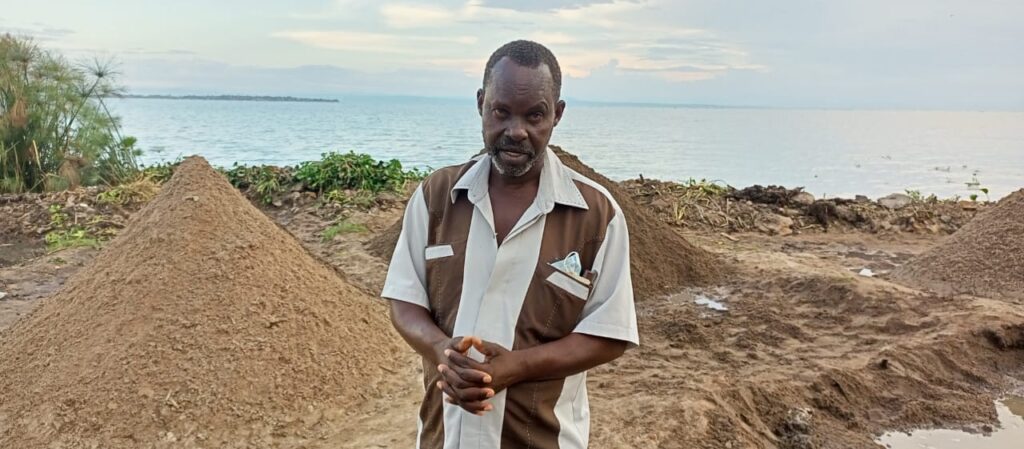
In another 2020 case, Nyaguti sued the Ports Authority Kisumu and the officer in charge of Railways and Ports Police Station, alleging that they had ordered the fisher folk to leave the Kichinjio BMU Landing Site to develop the Kisumu port without providing them an alternative fishing site or de-gazetting the wetland area.
In this case, the court found that the defendants had violated the fisher folk’s economic rights as laid out in the Kenyan Constitution.
“I am hated here,” Nyaguti says, adding that he was unceremoniously hounded out of office as the Beach Management Unit chair following his strong stand on conservation of the lake.
Spatial plan to demarcate biodiversity hotspots
Dr Christopher Aura is the Director of Fresh Water Systems Research at KEMFRI. He is in charge of aquatic research in lakes including; Victoria, Turkana, Naivasha and Baringo.
“Apart from undertaking research in the aquatic ecosystems, we do assessment of the status and monitor the aquatic systems and advise the government on conservation,” he says.
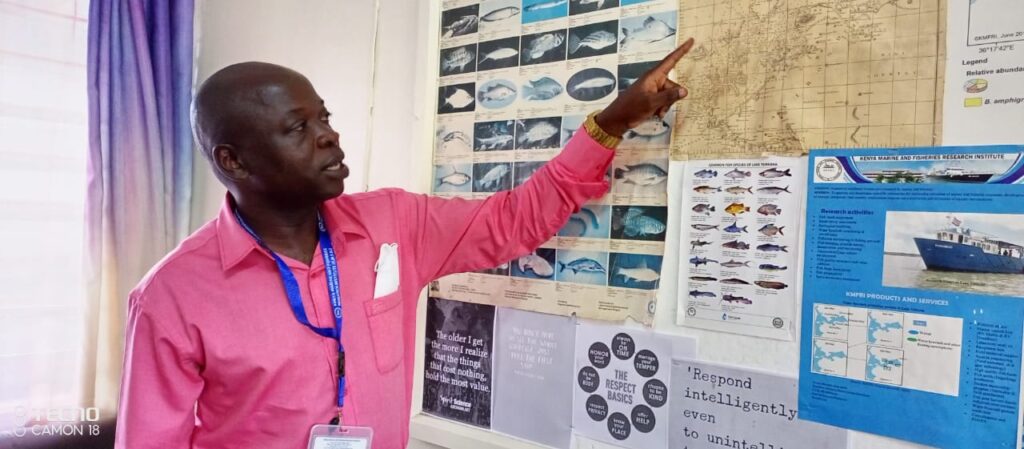
According to KEMFRI, Lake Victoria biodiversity is subdivided into Flora (plants), Fauna (animals) and the Non-living (water, sediments, among others).
Dr Aura confirms that Lake Victoria is actually bleeding. According to Dr. Aura, human activities and climate change remain the biggest threat to the lake’s ecosystem.
We are currently leading a team of stakeholders that will be carrying out a spatial plan so that people understand the biodiversity, through demarcation of hotspots because the lake is multifunctional and should not be left to be operated on as a jungle,
Dr Aura
“There is fishing pressure, water quality changes, unbalanced predator-prey relationship, and governance issues which have to be checked,” he says.
He says these challenges are to blame for the increased cases of human-wildlife conflict.
Dr Aura admits that Lake Victoria has no spatial plan which would guide sustainable exploitation of its resources.
With no such a document, people interacting with the lake have no knowledge on the inventory of the large fauna such as crocodiles and hippos.
With little knowledge about their feeding, and reproduction areas, humans are bound to clash with them, leading to the conflict.
“We are currently leading a team of stakeholders that will be carrying out a spatial plan so that people understand the biodiversity, through demarcation of hotspots because the lake is multifunctional and should not be left to be operated on as a jungle,” he said.
Dr Aura feels there is a need to strengthen the implementation of regulatory frameworks on the protection of the lake.
He also notes that the spatial planning will help with designating various parts of the lake for various activities, hence creating order and sustainable exploitation.
Such designations could include having open fishing areas, fish breeding sites, hippo and crocodile breeding and feeding zones, transportation zones, among others.
In 2022, the National Fisheries Resources Research Institute in Uganda launched the Uganda Freshwater Biodiversity Portal, a data portal that tracks and maps occurrences of freshwater species in Uganda, including in the shared Lake Victoria.
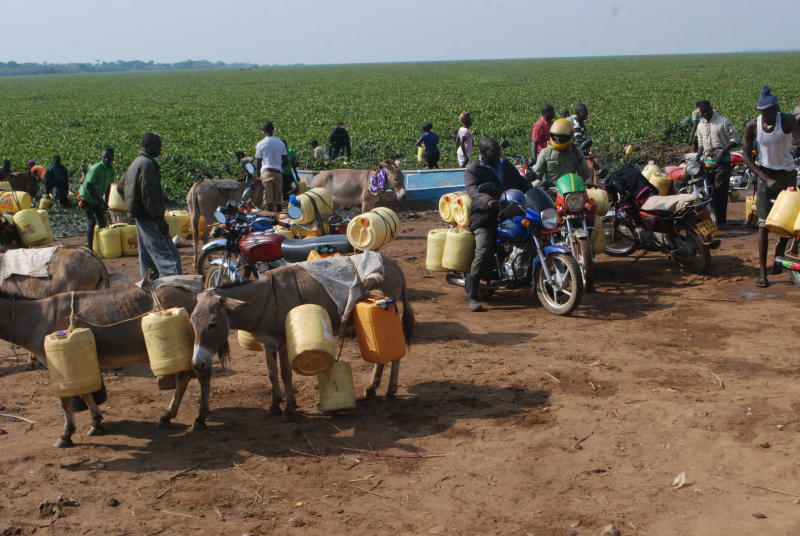
Sources of Lake Victoria pollution
National Environmental Management Authority (NEMA) is a government agency charged with the responsibility of coordinating environmental management in Kenya.
Tom Togo, NEMA’s Kisumu County Director of Environment, says Lake Victoria is facing pollution emanating from as far as 50 kilometres away.
According to Mr Togo, pollution from agricultural activities lead in polluting the lake at 40 percent, followed by pollution from domestic waste at 30 percent.
“The sewer coverage in Kisumu town is as low as below 20 percent. This means a lot of liquid waste which is not managed finds its way into the lake,” he said.
According to Kisumu Water and Sanitation Company (KIWASCO), a government entity charged with providing water and sanitation services in Kisumu, the town currently has a sewer coverage of 18 percent, and piped water at 83 percent.
The sewer coverage in Kisumu town is as low as below 20 percent. This means a lot of liquid waste which is not managed finds its way into the lake
Tom Togo
Togo noted that the sewer put up in the 1950s has since been overwhelmed by the growing population in town, and can no longer serve its purpose effectively.
He says the entity has been taking a lead role in cracking down on polluters, but blamed weakness in the enforcement of conservation policies as the weakest link in protecting the lake.
He noted that many of the wetlands in the area are not gazetted as protected areas, hence hindering the crackdown on those damaging the areas.
Dunga, Lwang’ni and Kichinjio are some of the unprotected wetlands.
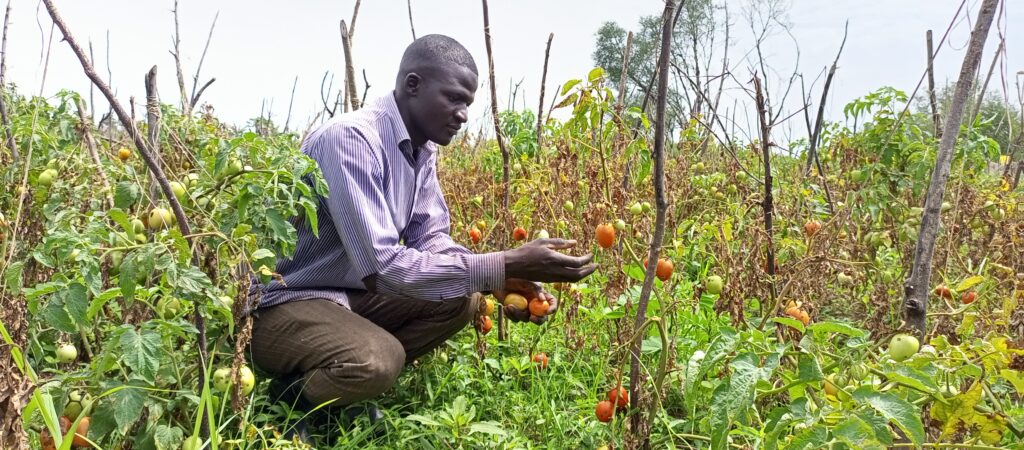
But even with these challenges, the entity managed to initiate 12 legal suits against environmental degraders in the area in 2021.
“Seven of the cases were dispensed, while five are still active,” added Togo.
This year, three other cases have been lodged in court.
According to Togo, unmanaged waste which finds its way into the lake damages the ecosystem, making life unfavourable to aquatic species.
Togo’s assertions are ascertained by a report on the assessment of hydro-chemistry for sewage channels discharging into Lake Victoria at Kisumu bay conducted between July 4 and 8, 2022, by InfoNile in collaboration with Water Resource Authority (WRA).
Water sampling fails drinking water standards
The project funded by InfoNile with support from JRS Biodiversity Foundation took 24 water samples to test among other parameters; Biochemical Oxygen Demand (BOD), Chemical Oxygen Demand (COD), Turbidity, Alkalinity, Oil and Grease, pH, Nitrogen, Phosphorus, and Metals such as Lead, Mercury and Calcium.
The assessment survey was conducted on the eastern part of the Winam gulf of Lake Victoria within the Kenyan territory in Kisumu County. Samples were taken along Rivers Auji and Kisat and Kisumu bay.

The report indicated that Rivers Auji and Kisat are the main channels of pollution at the bay.
Both rivers meander through the settlements in Kisumu, interacting with human activities which contribute to their pollution.
According to the report, some of the activities polluting the river include poorly sited dumpsites in the informal settlement, liquid waste discharges from neighboring homesteads, poor sanitation facilities, wash water from car washes discharging directly into the river, and in some cases from vehicles being washed right in the river.
Others sources of pollution include leachate oozing from a dumpsite at Kachok during the wet season, poor disposal of used oils from Jua Kali motor garages, disposing of septic tanks into the river, and blocked sewer lines discharging sewage into storm drains, which is then washed to the river when it rains.
The assessment indicated that many indicators were within the recommended ranges, including pH, Electrical Conductivity, Total Suspended Solids, Total Phosphorus, Chlorophyll, Cadmium and Mercury.
However, the report showed that the Chemical Oxygen Demand (COD), Total Coliforms and E-coli, Lead, and Oil and Grease levels were above the recommended ranges.
Total Nitrogen, Biochemical Oxygen Demand, and Dissolved Oxygen values were also outside of recommended ranges, especially in the Kisat River.
COD is the amount of oxygen needed to oxidize the organic matter present in water. The higher the COD value, the more serious the water pollution.
“Kisat River mouth, River Kisat at golf club, River Kisat at downstream of ETP, Kisat ETP and Nyalenda lagoons effluent recorded values of COD ranging between 64 – 160 mg/l. The values do not comply with the East African Effluent Discharge Standard of maximum 60 mg/l,” noted the report.
Coliforms and e-coli are bacteria found in faeces. Total coliform counts give a general indication of the sanitary condition of a water supply. Total coliforms include bacteria that are found in the soil, in water that has been influenced by surface water, and in human or animal waste. If the water sample has E. coli, it means your drinking water has likely been contaminated by sewage or manure.
The report noted that all the sampling points along River Kisat, River Auji, Kisat Effluent Treatment Plant and Nyalenda lagoons registered positive tests for total coliforms and e-coli colonies per 100ml of Too Numerous to Count (TNTC).
The deep waters in the bay also registered E-coli colonies per 100ml of values ranging between 28 and 46.
“The values are indicative of non-compliance to the East African drinking water standards,” read the report in part. The same lake sampling site registered positive tests for total coliform colonies per 100ml of values ranging between 62 and 86.
According to Mr Fanuel Onyango, Water Quality and Pollution Control Officer at Water Resource Authority, Lake Victoria Basin Area, the two bacteria are killed during biological waste treatment.
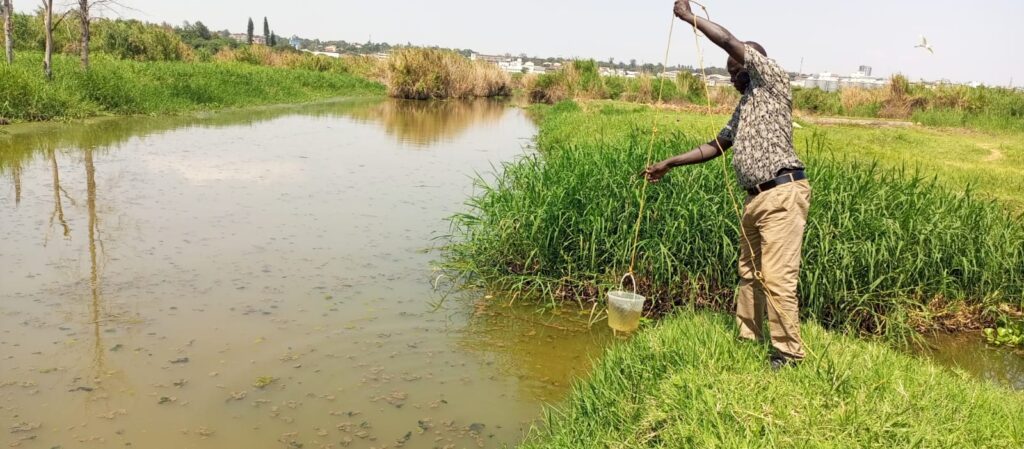
“At the final stage of waste treatment, the disinfection should be done to kill the bacteria,” he said.
According to the report, the contamination by coliforms may be due to the inability of the current wastewater treatment plants to disinfect the final effluent.
“The wastewater treatment plants have not been incorporated with a tertiary treatment system for disinfecting microorganisms before discharge into the environment. Further, the untreated domestic wastewater originating from informal settlements of Obunga and Nyalenda and also storm runoff discharging directly into the rivers and lake may also be a source of coliform contamination,” the report noted.
Onyango noted that the presence of the bacteria in water is an indication of the presence of other pathogenic bacteria such as those causing typhoid and cholera.
According to a Kenya Health Information Systems (KHIS) report, incidences of water-borne diseases including cholera and salmonella in Kisumu county have generally declined from 2017-2021, although hepatitis increased again in 2020.
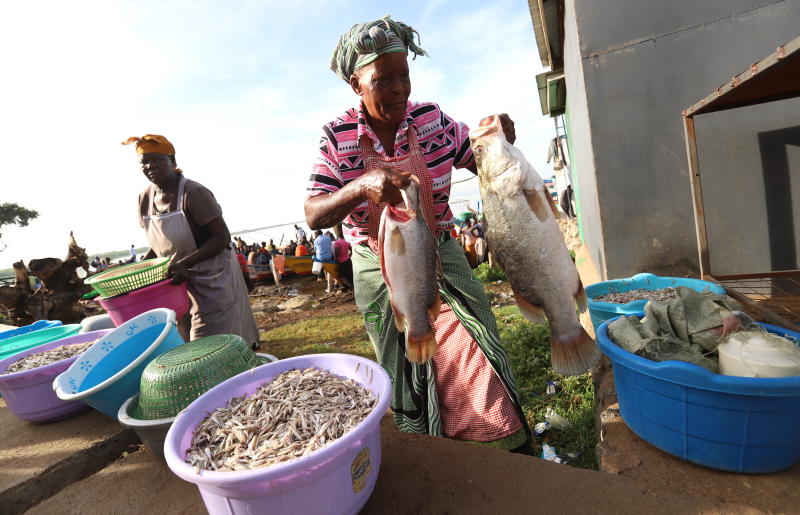
Worryingly, six of the nine sampling points also detected the heavy metal of lead at a level above recommended ranges.
“These stations are located around the Kisumu railway harbour which is adjacent to the town and the informal settlements of Obunga and Nyalenda,” the report noted. “Various “juakali” activities and wastes from these areas, leaded fuel used by vehicles, paints and the industrial and municipal waste discharges are the probable sources of lead in these areas.
Lead is highly toxic to the human body. It can cause major health effects, such as hearing loss, hypertension, kidney impairment, immune system dysfunction, and toxicity to the reproductive organs. It is especially dangerous to fetuses, infants and young children, whose organs are developing.
The Kisat and Nyalenda oxidation lagoons do not have the capacity to manage excess heavy metals concentrations, the report concluded.
Along with human health, the pollution also impacts aquatic biodiversity. In the assessment, Oil and Grease was also found to be above the recommended levels, which can interfere with biological life in surface waters and create unsightly films.
Dr Paul Orina, Assistant Director of Freshwater Aquaculture in the Kenya Marine and Fisheries Research Institute, commented on the findings of the 2022 sampling.
“The many factories, industries and informal sector garages are the major point sources of the oil and grease discharge to the lake ecosystem,” he wrote.
He also noted that the pollution detected has a large impact on species living in the water.
“The high pollution levels along the rivers from treatment point of discharge has a significant effect on the river ecosystem services to the micro and macro-invertebrates,” he wrote.
“The pollution levels limit the diversity, abundance and richness of aquatic species. Further to this the avian (birds) may be silently ailing from the consumption of organisms with heavy metals bioaccumulation. This may be necessitating the decline of water birds in recent years.”
Aquatic life depends on a sufficient level of oxygen dissolved in water.
At two of the sampling points along Kisat River and the Kisat River ETP effluent discharge point, the values were below minimum standards, meaning oxygen levels were too low. Nitrogen, which stimulates the growth of algae that depletes oxygen, was also too high in three of the Kisat River sampling locations.
Nitrogen can come from agricultural fertilizers, wastewater, and animal waste.
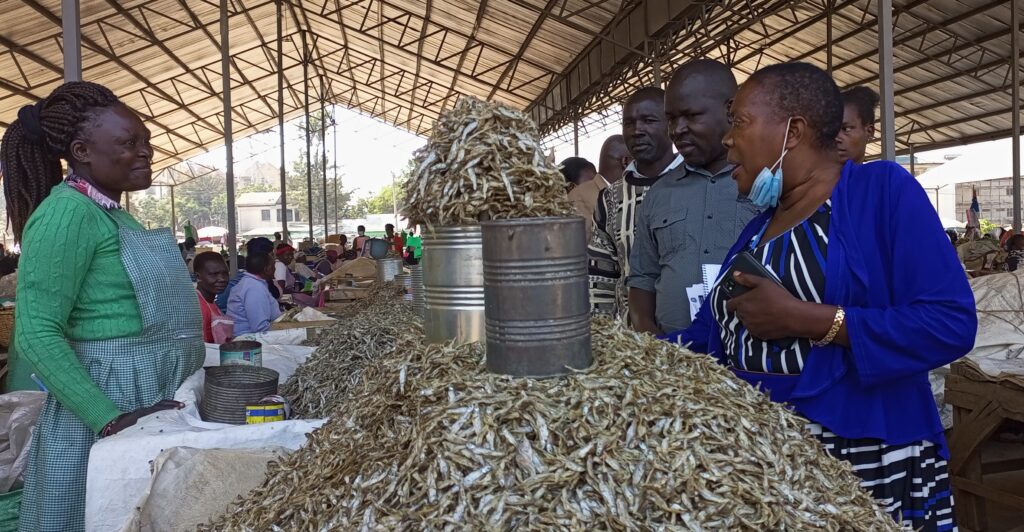
Water quality of Lake Victoria has been an issue for many years. A 2020 study with samples collected in 2015 from different fishing beaches in Lake Victoria (Kenya) concluded that water quality parameters vary significantly across the different sampling sites in the area studied.
This could be an indication that the onshore activities in the different study sites are altering the water quality of the study area.
There were also indicators that pollution in the study area is not restricted to lakeshore but also offshore probably due to adequate mixing of water in the study area.
However, the sampling conducted in 2022 showed a level of chemicals that has been “progressively increasing,” according to the Water Resource Authority report commissioned by InfoNile.
“It can be noted that Kisumu bay at Lake point is characterized by hydro chemicals whose level of concentrations in water are progressively increasing with values of some of the chemicals and micro-bios contaminants exceeding the recommended East African Effluent Discharge Standards, Environmental Management and Co-ordination Act (2006) regulation and the Water Resources Management Rules (2007),” the Water Resource Authority report concludes.
There is a need for reinforcement of existing policies and regulations for any projects as far as the environment is concerned rather than just having them on paper
Dr Orina
The report recommends implementation of intervention measures aimed at reducing pollution loads to ensure discharge of compliant effluent into the water resource.
It also calls for enhanced enforcement of national regulations by the relevant agencies to ensure compliance on waste management.
Dr Orina agrees: “There is a need for reinforcement of existing policies and regulations for any projects as far as the environment is concerned rather than just having them on paper,” he wrote.
This story was supported by InfoNile with funding from JRS Biodiversity Foundation; additional reporting by Annika McGinnis, Ruth Mwizeere and Primrose Natukunda.
